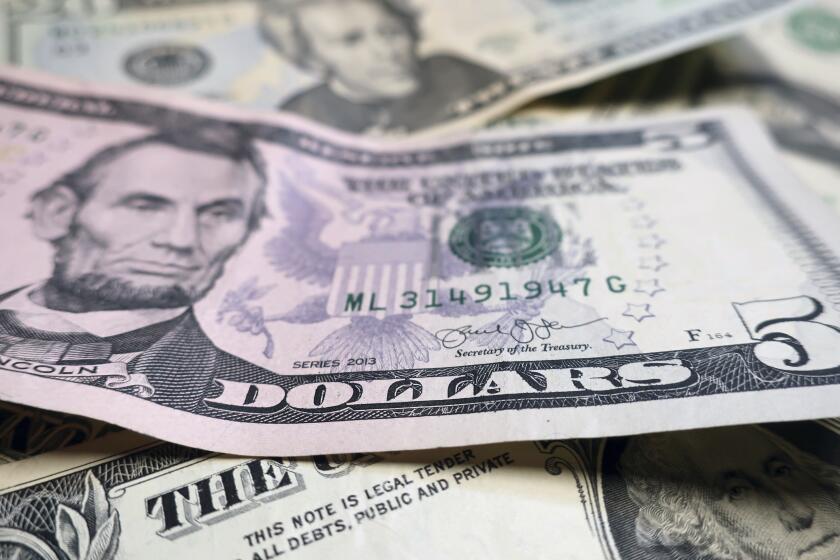Oil refiners blame California regulations, import issues and refinery closure for high gas prices
- Share via
California’s stubbornly high gasoline prices in 2015 resulted from state regulations, trouble with imports and an outage at a major refinery, the oil refining industry told regulators Wednesday.
Speaking to the state Petroleum Market Advisory Committee for the first time since expensive California gasoline brought huge profits to oil refineries this year, the Western States Petroleum Assn. said the unusually large gap between the state’s average price for a gallon of regular gas and the national average involved matters out of the oil refinery industry’s control.
“Clearly, there is a regulatory component for the situation that occurred this year,” said Tupper Hull, vice president of the petroleum group. “As this committee looks at the continuing differential in prices, that’s an area we would recommend you look at.”
In addition, Skip York of research firm Wood Mackenzie, speaking on behalf of the oil refining industry, said that as gas prices in California peaked in July, foreign and domestic sources had trouble delivering product to the state.
No tankers were available in the Gulf Coast to bring fuel to California. Better deals were available to suppliers such as India, as global demand for gasoline this year has soared.
“It’s not going to be economic,” York said suppliers ultimately determined. “It was now more attractive for me to sell into a closer market than California.”
The average gas prices in California typically runs higher than the average for the rest of the nation because of the unique blend of environmentally friendly gas as well as state taxes and fees.
But this year, the gap was unusually wide, with the state average as much as 75 cents a gallon more than the national average. In the Los Angeles area, the gap was even greater — as much as $1.50 higher.
Blame for much of the disparity this year fell on the outage at Exxon Mobil’s Torrance refinery. Exxon reduced output at the facility to less than 20% after an explosion in February destroyed a pollution control system.
Normally, Torrance accounts for 10% of the state’s refined capacity and 20% of the capacity in Southern California.
Oil industry experts thought the plant would return to service by July, even if only with a temporary fix. Then it was expected that perhaps by year’s end, Exxon would increase production.
Neither happened. And now the plant isn’t expected to return to full capacity until February, just in time for Exxon to sell the facility to contracted buyer PBF Energy, a Parsippany, N.J.-based firm.
But even as inventories in California have increased from summer lows, gas prices in the L.A. region and across the state remain out of step with the rest of the country.
Wednesday, the national average for a gallon of regular inched closer to a much anticipated price of $1.99 — a price not seen since 2009.
The national average stood at $2.01, but in the L.A. area, the average price remained more than 70 cents more.
Although some suppliers might have thought the economics didn’t make sense to deliver to California, committee members on Wednesday questioned why some fuel tankers docked on the state’s shores but left without unloading any product.
Gordon Schremp, a senior fuels analyst for the commission, acknowledged to the committee that a ship arrived and left, but added that there was not more than one such ship.
“Only one vessel stopped in California ... and left and went down to Mexico,” Schremp said. “There’s only one cargo that left.”
Jamie Court, president of the advocacy group Consumer Watchdog, rejected the oil industry’s efforts to blame others for the high gas prices.
Court said the wide gap between California and the rest of the nation was the result of price manipulation by refiners, resulting in exorbitant profits.
In particular, Court accused the refiners of secretly selling gas at lower prices to unbranded stations than to branded stations, which make up about 80% of the market. That, he said, has kept gas prices artificially high.
The branded stations end up paying 20 to 30 cents more on the wholesale market than the unbranded stations, Court said.
Court told the committee he continues to believe there needs to be more transparency on the part of the oil refineries and the possible manipulation of gasoline prices needs formal review.
“There is a pricing strategy, a deliberate pricing strategy that needs … an antitrust investigation,” Court said.
“If everybody can see everybody’s trades, then the dealers can’t be taken for a ride and the consumers can’t be taken for a ride,” Court said in an interview.
Join the conversation on Facebook >>
Perhaps the biggest surprise during Wednesday’s hearing, was the attendance by former state Atty. Gen. Bill Lockyer, who conducted his own investigation into gasoline prices and oil company profits nearly a decade ago.
Lockyer told the committee that he was hired by the oil refining industry to update the analysis from his old reports resulting from that and other investigations.
In one of those reports, Lockyer reviewed an antitrust matter involving the Exxon Mobil merger in the late 1990s and early 2000s. He concluded that Californians had paid $1.3 billion more for gas in 1999 “largely as a result of low competition and high concentration in the state’s gasoline market.”
By Court’s account, matters only got worse this year for consumers, compared to previous reviews. According to Court’s figures, oil refineries added $10 billion to the cost of gas in California this year or more than $400 per driver.
Twitter: @ivanlpenn
ALSO:
Costa Mesa actor convicted in gruesome double slaying
State investigators cite culture of abuse, racism by High Desert State Prison guards
Did Donald Trump just call for Republican unity on ‘Jimmy Kimmel Live’?
More to Read
Inside the business of entertainment
The Wide Shot brings you news, analysis and insights on everything from streaming wars to production — and what it all means for the future.
You may occasionally receive promotional content from the Los Angeles Times.











